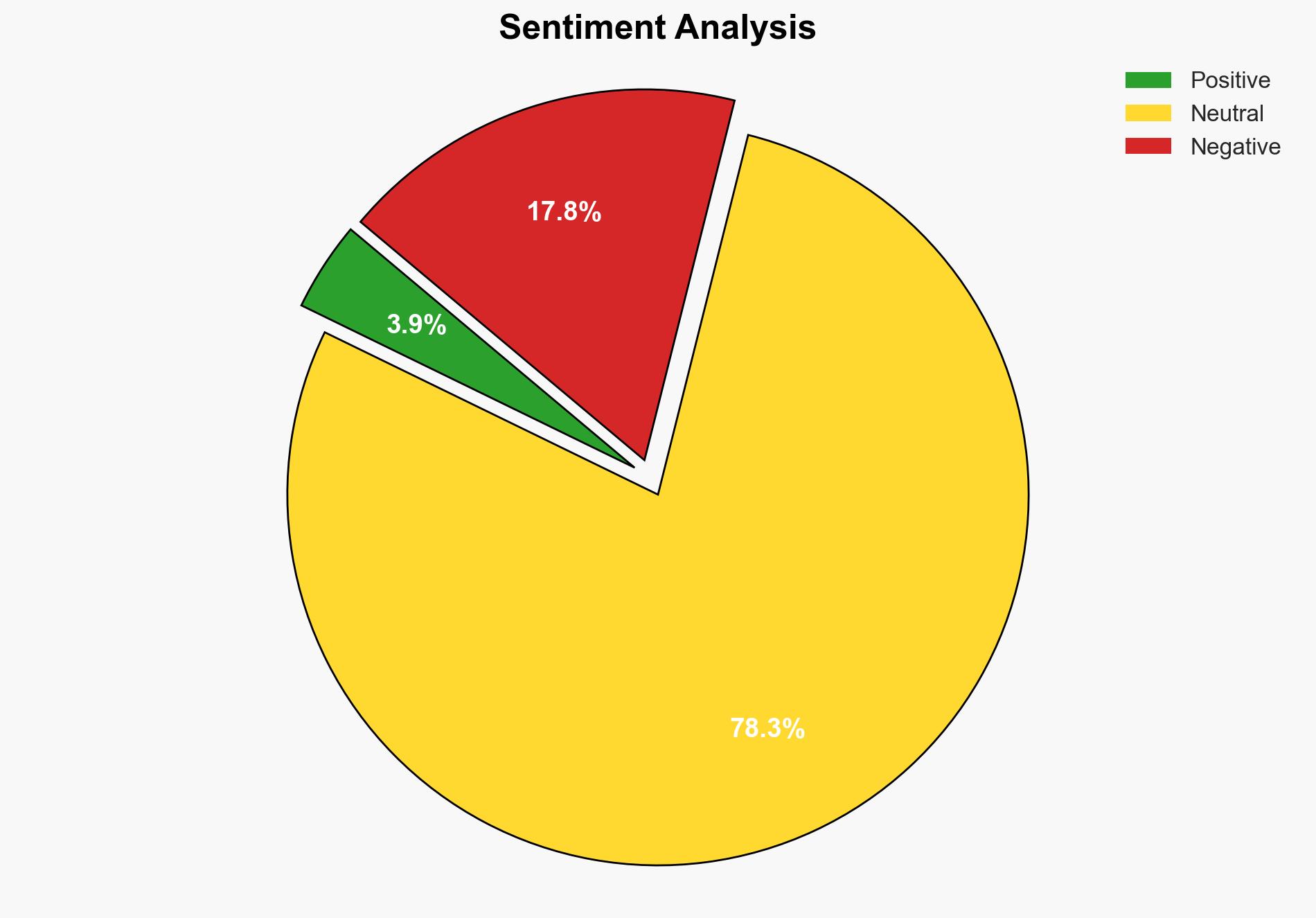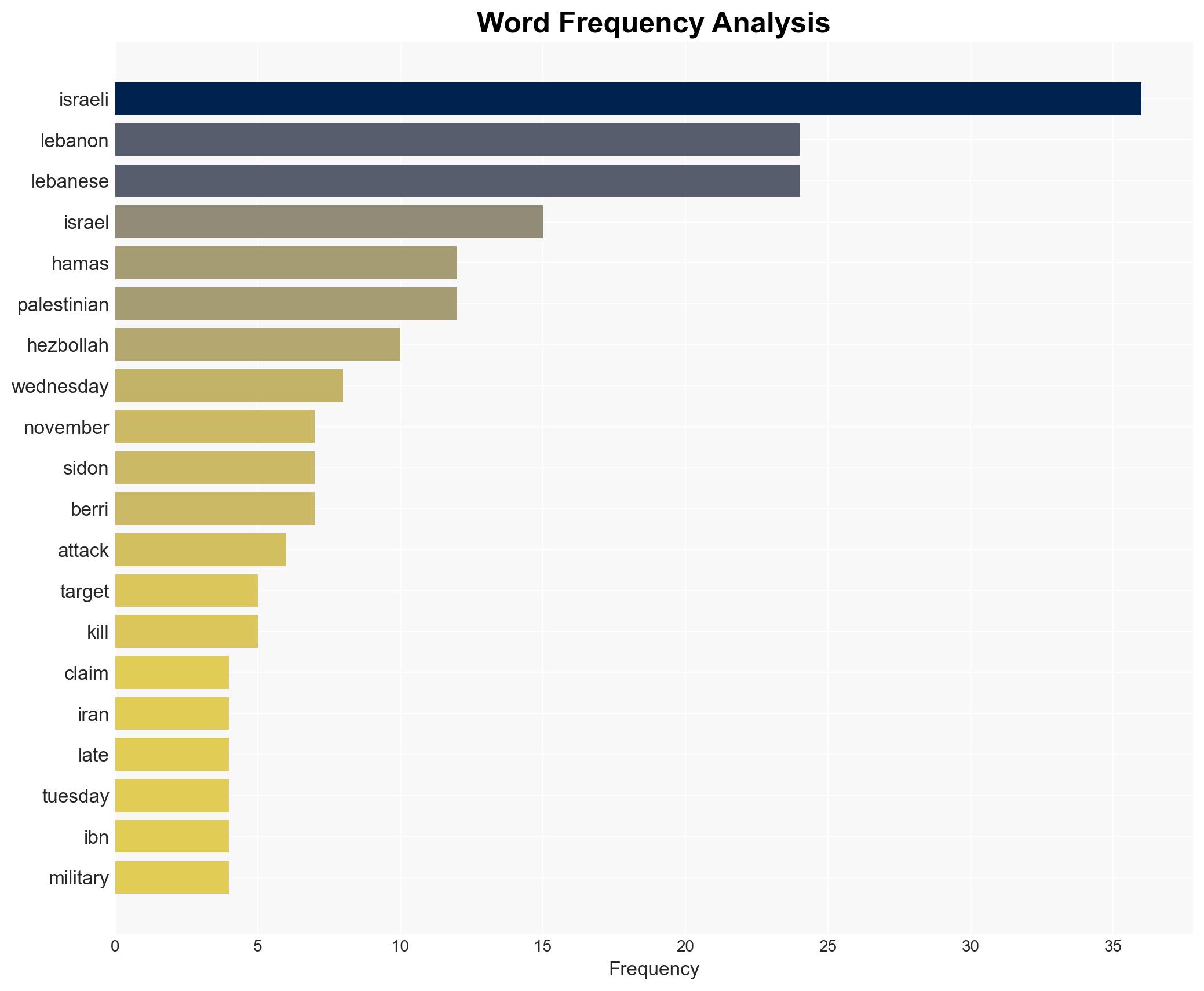Hamas rejects Israeli claim of being targeted in airstrike that killed 14 in Lebanon – Globalsecurity.org
Published on: 2025-11-20
AI-powered OSINT brief from verified open sources. Automated NLP signal extraction with human verification. See our Methodology and Why WorldWideWatchers.
Intelligence Report:
1. BLUF (Bottom Line Up Front)
The most supported hypothesis is that the Israeli airstrike targeted a Hamas training facility, but the attack resulted in significant civilian casualties, complicating the narrative and increasing regional tensions. Confidence level: Moderate. Strategic recommendation: Increase diplomatic engagement to de-escalate tensions and verify claims through independent investigations.
2. Competing Hypotheses
Hypothesis 1: The Israeli airstrike targeted a Hamas training facility, as claimed by Israel, but resulted in unintended civilian casualties due to proximity to civilian areas.
Hypothesis 2: The airstrike was indiscriminate, targeting a civilian area under the guise of hitting a Hamas facility, as claimed by Hamas.
Hypothesis 1 is more likely given Israel’s historical pattern of targeting militant infrastructure, but the high civilian toll raises questions about intelligence accuracy and operational execution.
3. Key Assumptions and Red Flags
Assumptions include the accuracy of Israeli intelligence and the presence of Hamas facilities in civilian areas. Red flags include potential bias in reports from both Israeli and Hamas sources, and the use of emotionally charged language by Hamas to frame the narrative. Deception indicators include conflicting casualty reports and the strategic use of civilian areas by militant groups.
4. Implications and Strategic Risks
The incident risks escalating military engagements between Israel and Lebanese factions, potentially drawing in Hezbollah and increasing regional instability. Politically, it may strain Israel’s relations with Lebanon and other neighboring states. Economically, prolonged conflict could disrupt local economies and international investments. Informationally, both sides may intensify propaganda efforts, complicating diplomatic resolutions.
5. Recommendations and Outlook
- Encourage independent investigations to verify claims and reduce misinformation.
- Facilitate dialogue between Israeli and Lebanese authorities to prevent further escalation.
- Best scenario: De-escalation through diplomatic channels and verified investigations.
- Worst scenario: Escalation into broader conflict involving Hezbollah and regional actors.
- Most-likely scenario: Continued low-intensity conflict with sporadic engagements.
6. Key Individuals and Entities
Nabih Berri (Lebanese Parliament Speaker), Sheikh Naim Qassem (Hezbollah Secretary-General)
7. Thematic Tags
Counter-Terrorism, Middle East Conflict, Civilian Casualties, Diplomatic Relations
Structured Analytic Techniques Applied
- ACH 2.0: Reconstruct likely threat actor intentions via hypothesis testing and structured refutation.
- Indicators Development: Track radicalization signals and propaganda patterns to anticipate operational planning.
- Narrative Pattern Analysis: Analyze spread/adaptation of ideological narratives for recruitment/incitement signals.
Explore more:
Counter-Terrorism Briefs ·
Daily Summary ·
Support us





